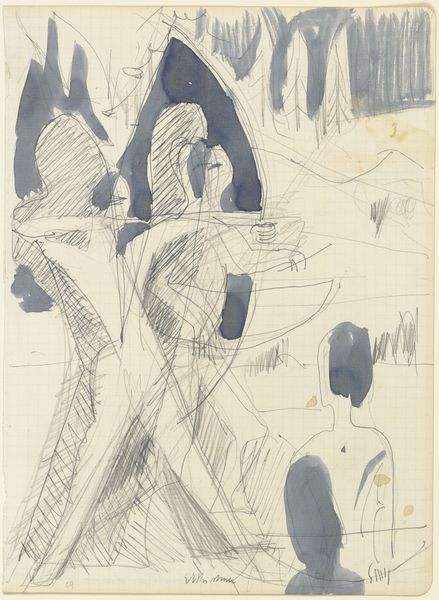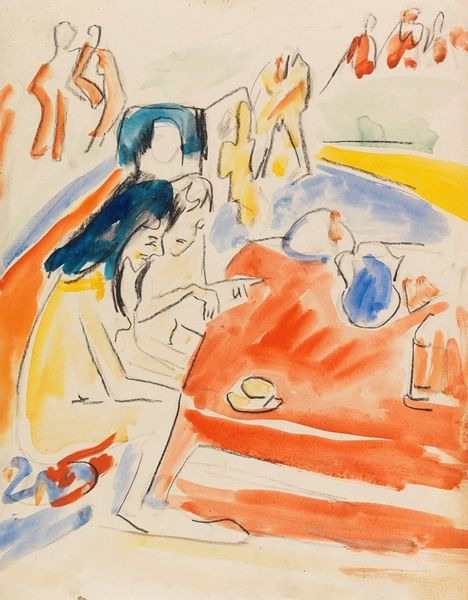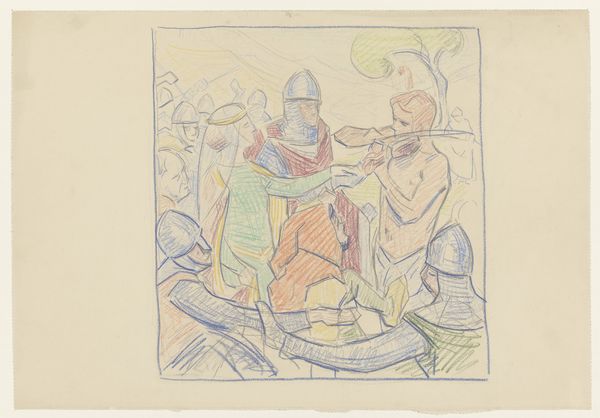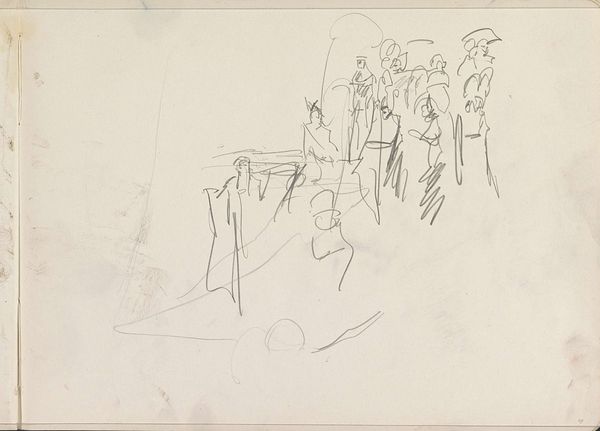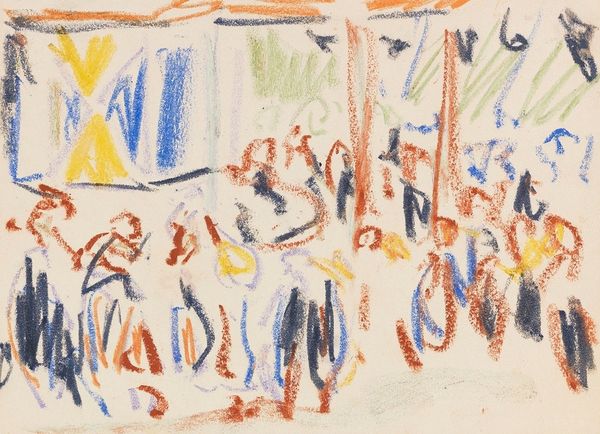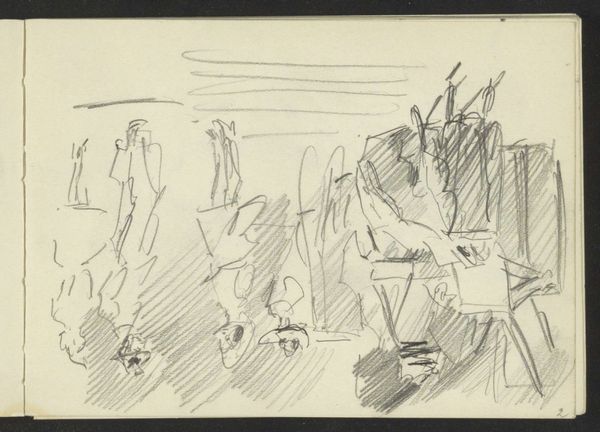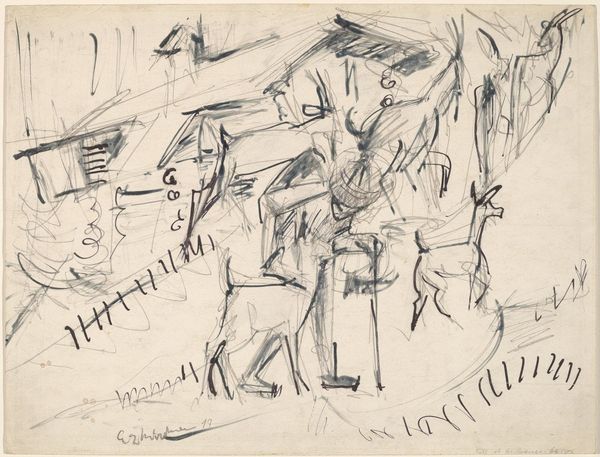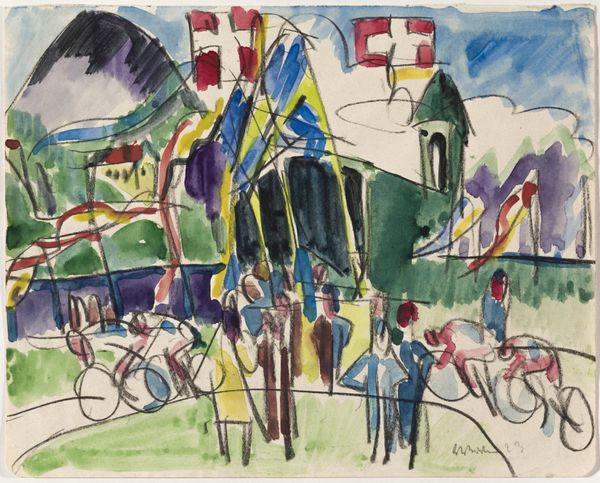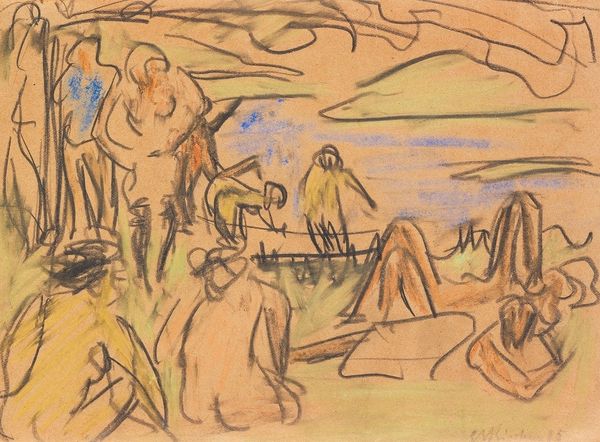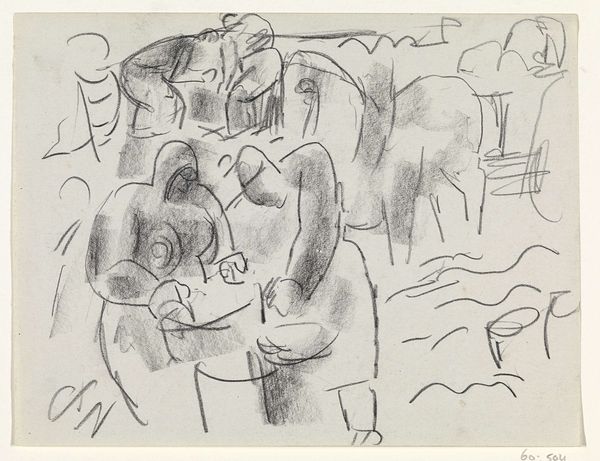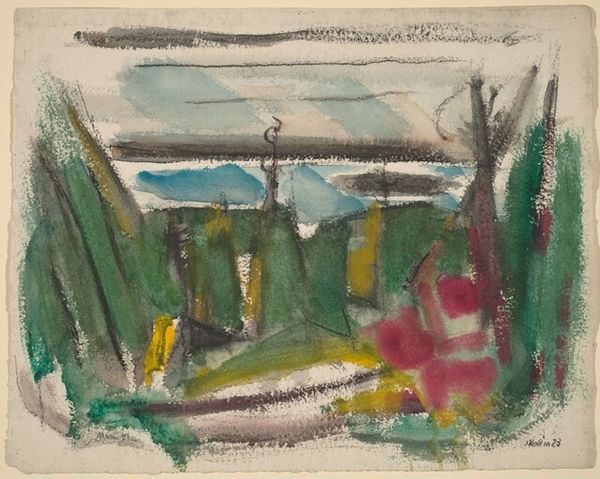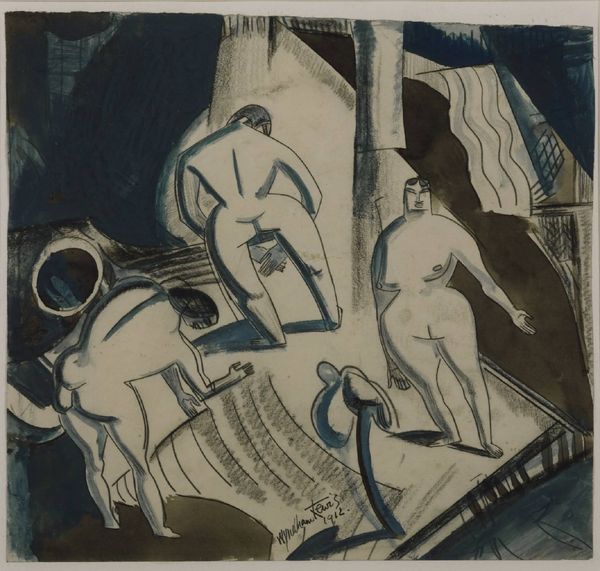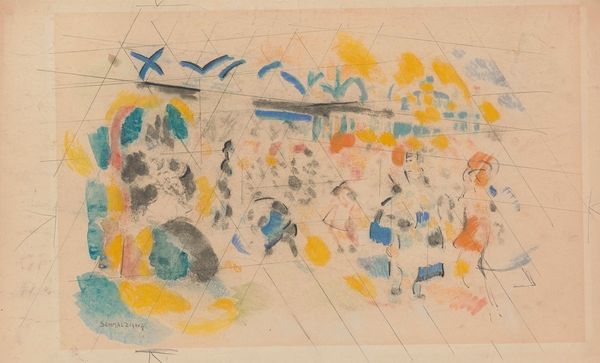
drawing, paper, watercolor
#
drawing
#
landscape
#
figuration
#
paper
#
watercolor
#
expressionism
#
watercolor
Copyright: Public Domain
Curator: Here we have Ernst Ludwig Kirchner's "Handorgler in einer Mondnacht," or "Accordion Player in a Moonlit Night," dating from around 1924. He renders the scene in watercolor and pencil on paper. Editor: It's predominantly blue, quite haunting, actually. Almost as if these figures are ghosts adrift in the landscape. Curator: Notice how Kirchner uses simplified forms. The angular mountain peaks, the stark vertical lines representing trees – they create a sense of compression and unease. Editor: I'm immediately drawn to the figures themselves. The solitary accordion player and the standing figure, perhaps a woman, have such a distinct lack of facial features. This facelessness invites speculation on their social and political positioning within that postwar period. Curator: Precisely. And the limited palette, primarily blues and greens, underscores the somber mood. Kirchner masterfully exploits the translucent nature of watercolor to build up layers of color, lending depth and dimension to the scene despite its apparent simplicity. Editor: Knowing Kirchner's experiences as a volunteer driver in World War I and his struggles with mental health in the aftermath, one can't help but see this piece as a manifestation of that trauma. The accordion player is a melancholic minstrel providing a soundtrack to existential despair. Curator: A persuasive reading. Observe too, how the composition directs our gaze. The eye is drawn from the seated figures in the background, towards the central accordion player, then up to the lonely figure standing at the edge of the scene. Editor: Indeed. Considering the art world’s underrepresentation of LGBTQ+ individuals, this prompts us to think if these gender ambiguous, ethereal figures may represent something of the artists own interiority as well as an entire generation of people rebuilding a new life, even under melancholic, postwar shadows. Curator: Absolutely. There are many elements that could point to many meanings; however, no matter how one chooses to view this, there's little doubt Kirchner was successful in his attempt to capture the spirit of the night, that feeling of quiet desperation perhaps best rendered as an expressionistic painting. Editor: A poignant testament to the power of art to capture the intangible aspects of our human condition. It speaks to both the enduring effects of trauma and the strength of the human spirit to seek out expression even within the somber.
Comments
No comments
Be the first to comment and join the conversation on the ultimate creative platform.

